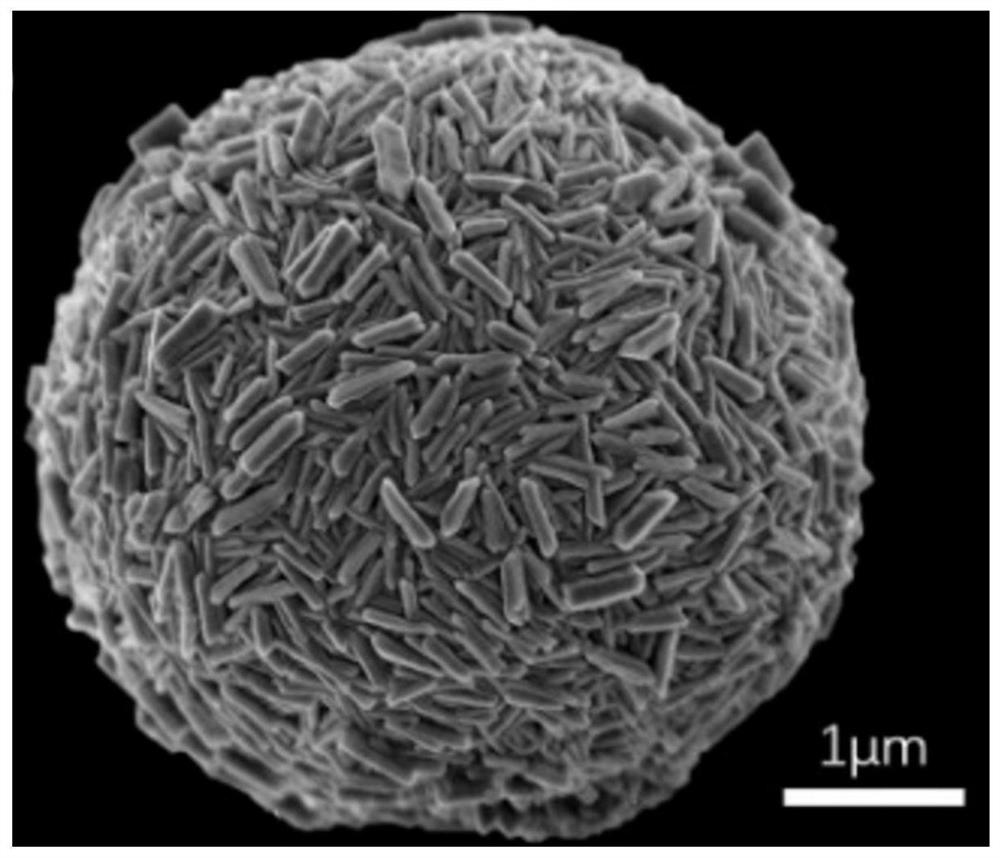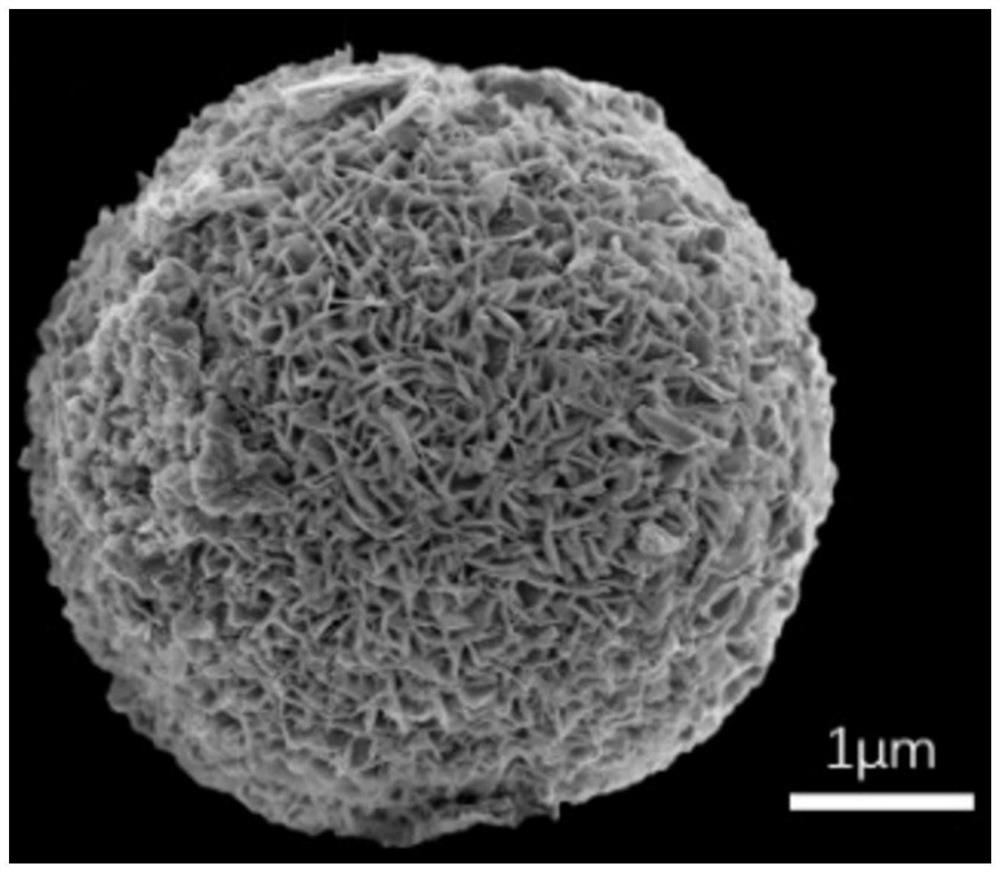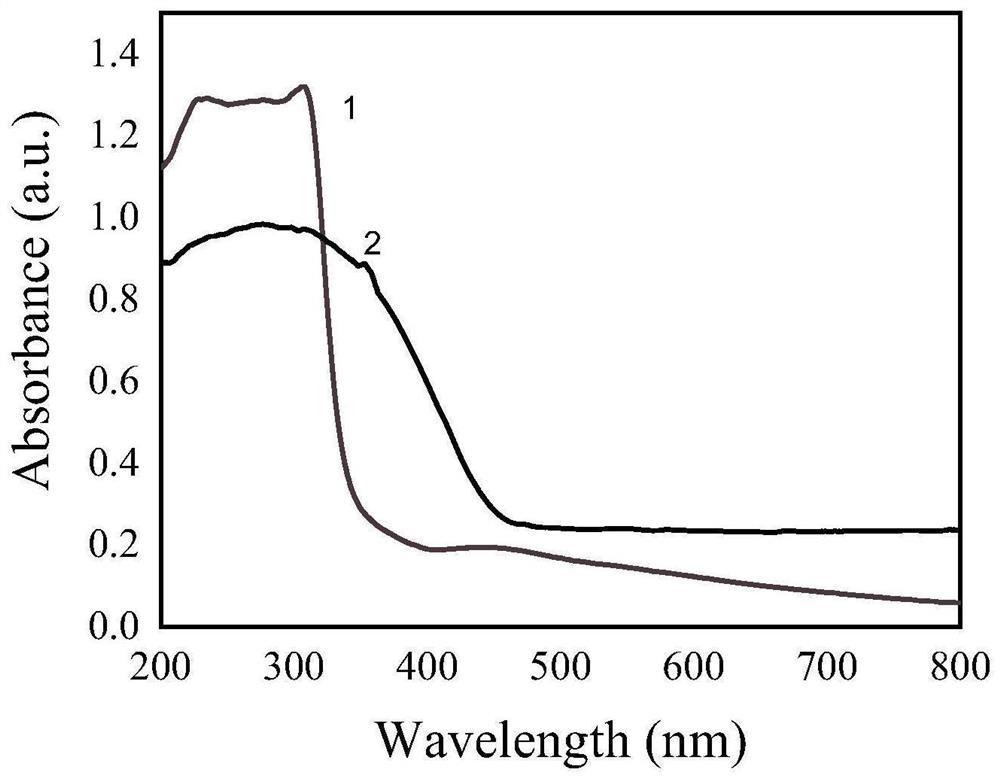Bi-MOF-M/Bi2MoO6 visible-light-driven photocatalyst capable of efficiently degrading organic wastewater and preparation method of Bi-MOF-M/Bi2MoO6 visible-light-driven photocatalyst
A technology of organic wastewater and catalysts, which is applied in the field of environment and energy, can solve the problems that nano photocatalysts are difficult to recycle and reuse, photogenerated carriers are easy to recombine, and are not easy to recycle, so as to achieve good industrial application prospects, improve visible light catalytic performance, and improve The effect of absorption strength
- Summary
- Abstract
- Description
- Claims
- Application Information
AI Technical Summary
Problems solved by technology
Method used
Image
Examples
Embodiment 1
[0039] This embodiment is Bi-MOF-M / Bi 2 MoO 6 Preparation and application of visible light catalysts. The specific process is:
[0040] Preparation of Bi-MOF microspheres (Bi-MOF-M): 1 mmol of Bi(NO 3 ) 3 ·5H 2 O was dissolved in 40 mL of ethylene glycol to obtain A; 1 mmol of terephthalic acid was dissolved in 30 mL of N,N-dimethylformamide to obtain B, and the obtained B was added dropwise to A, and stirred at room temperature for 1 h, Then transferred to a hydrothermal reaction kettle, reacted at 120°C for 12h, after the reaction, naturally cooled to room temperature, filtered, washed once with deionized water, washed once with ethanol, and dried in vacuum at 50°C to obtain the Bi-MOF Microspheres (Bi-MOF-M);
[0041] Bi-MOF-M / Bi 2 MoO 6 Preparation of visible light catalyst: 0.1g of Bi-MOF-M was ultrasonically dispersed in 40mL of ethanol to obtain A; 0.1mmol of Na 2 MoO 4 2H 2 O was dissolved in 20mL of ethylene glycol to obtain B, and the obtained B was added ...
Embodiment 2
[0045] This embodiment is Bi-MOF-M / Bi 2 MoO 6 Preparation and application of visible light catalysts. The specific process is:
[0046] Preparation of Bi-MOF microspheres (Bi-MOF-M): 5 mmol of Bi(NO 3 ) 3 ·5H 2 O was dissolved in 40 mL of ethylene glycol to obtain A; 5 mmol of terephthalic acid was dissolved in 30 mL of N,N-dimethylformamide to obtain B, and the obtained B was added dropwise to A, and stirred at room temperature for 3 h, Then transferred to a hydrothermal reaction kettle, reacted at 160°C for 18h, after the reaction, naturally cooled to room temperature, filtered, washed twice with deionized water, washed twice with ethanol, and dried in vacuum at 80°C to obtain the Bi-MOF Microspheres (Bi-MOF-M);
[0047] Bi-MOF-M / Bi 2 MoO 6 Preparation of visible light catalyst: 0.3g of Bi-MOF-M was ultrasonically dispersed in 40mL of ethanol to obtain A; 0.5mmol of Na 2 MoO 4 2H 2 O was dissolved in 20mL of ethylene glycol to obtain B, and the obtained B was adde...
Embodiment 3
[0051] This embodiment is Bi-MOF-M / Bi 2 MoO 6 Preparation and application of visible light catalysts. The specific process is:
[0052] Preparation of Bi-MOF microspheres (Bi-MOF-M): 2 mmol of Bi(NO 3 ) 3 ·5H 2 O was dissolved in 40 mL of ethylene glycol to obtain A; 3 mmol of terephthalic acid was dissolved in 30 mL of N,N-dimethylformamide to obtain B, and the obtained B was added dropwise to A, and stirred at room temperature for 2 h, Then transferred to a hydrothermal reaction kettle, reacted at 150°C for 16h, after the reaction, naturally cooled to room temperature, filtered, washed twice with deionized water, washed twice with ethanol, and dried in vacuum at 60°C to obtain the Bi-MOF Microspheres (Bi-MOF-M);
[0053] Bi-MOF-M / Bi 2 MoO 6 Preparation of visible light catalyst: 0.2g of Bi-MOF-M was ultrasonically dispersed in 40mL of ethanol to obtain A; 0.3mmol of Na 2 MoO 4 2H 2 O was dissolved in 20mL of ethylene glycol to obtain B, and the obtained B was adde...
PUM
 Login to View More
Login to View More Abstract
Description
Claims
Application Information
 Login to View More
Login to View More - R&D
- Intellectual Property
- Life Sciences
- Materials
- Tech Scout
- Unparalleled Data Quality
- Higher Quality Content
- 60% Fewer Hallucinations
Browse by: Latest US Patents, China's latest patents, Technical Efficacy Thesaurus, Application Domain, Technology Topic, Popular Technical Reports.
© 2025 PatSnap. All rights reserved.Legal|Privacy policy|Modern Slavery Act Transparency Statement|Sitemap|About US| Contact US: help@patsnap.com



